The Fomorians, or Fomóire, are a supernatural race in Irish mythology, often depicted as hostile and monstrous beings. These entities are considered one of the oldest and most powerful forces in the mythological history of Ireland, embodying the dangerous and chaotic elements of nature. They are central to numerous Irish mythological narratives, frequently appearing as antagonists to the various groups that settled Ireland, most notably the Tuatha Dé Danann. Their presence in these stories highlights themes of conflict, natural calamity, and the struggle between order and chaos.
Contents
Etymology of the Name
The name “Fomorian” has sparked considerable debate among scholars regarding its origins and meaning. Derived from the Old Irish “Fomóire” and Modern Irish “Fomhóraigh,” the name is often broken into two parts: “fo,” meaning under or below, and a second component whose meaning is less clear. One prevalent theory suggests that it combines with “mur” (sea), positing the Fomorians as “the undersea ones,” a nod to their mythological emergence from beneath the waves. Another interpretation connects it to “mór” (great or big), implying “the great underworld ones” or “nether giants.” Yet another compelling interpretation suggests a derivation from a hypothetical term related to “demons” or “phantoms,” pointing to a meaning akin to “nether demons” or “underworld phantoms.” This linguistic analysis reflects their portrayal as beings from beneath the earth or sea, enhancing their association with dark and destructive powers.
Historical and Mythological Origins
Overview of Mythological Origins
The Fomorians are described in ancient Irish texts as a primordial race, often associated with the sea and the underworld. Their origins are shrouded in mystery, rooted deep in Irish mythology as ancient inhabitants of Ireland, emerging from beneath the earth or the sea. Initially portrayed as malevolent spirits dwelling in underwater realms or the nether regions of the earth, they later transformed in the myths into formidable enemies, often clashing with Ireland’s later settlers, such as the Tuatha Dé Danann.
Descriptions from Ancient Texts
In early references, such as those found in the “Lebor Gabála Érenn” (The Book of Invasions), the Fomorians are depicted as hostile and monstrous beings, embodying chaos and destruction. Their portrayal evolves through the ages, influenced perhaps by external factors like the Viking raids during the historical period of these texts’ compilation, which may have added to their characterizations as sea raiders and formidable warriors.
Theories About Their Origins
The origins of the Fomorians in Irish mythology have been interpreted in various ways:
- Supernatural Interpretations: Most traditional narratives place the Fomorians among the first inhabitants of Ireland, often viewed as divine beings or deities of chaos, blight, and wild nature. Their battles with the Tuatha Dé Danann are seen as metaphysical conflicts that underscore the struggle between primal chaos and the emerging order brought by newer deities and heroes.
- Allegorical Interpretations: Some modern interpretations suggest that the Fomorians represent natural disasters or the harsh elements of the Irish landscape itself. This allegorical reading aligns them with forces of nature that must be overcome or tamed for civilization to flourish, akin to other mythological giants or destructive gods in Indo-European traditions.
- Historical Conjectures: There are also theories that propose the Fomorians as a memory of real groups of people who inhabited Ireland or its surrounding areas before the arrival of Celtic tribes. These conjectures suggest that the mythological depiction of the Fomorians as monstrous may be a dramatized representation of conflicts between incoming populations and the earlier settlers, possibly seafaring raiders or a culturally distinct group who became demonized in the folklore of later inhabitants.
Each of these interpretations contributes to the rich tapestry of stories surrounding the Fomorians, reflecting their multifaceted roles in Irish mythology as both entities of destruction and essential characters in the mythological history of Ireland.
Physical Description and Attributes
Description in Myths
The Fomorians are typically described with a range of monstrous and formidable features in Irish mythology. Ancient texts and folklore often depict them as grotesque beings, sometimes with the body of a human and the head of a goat, or having other abnormal traits such as having one eye, one arm, and one leg. This imagery portrays them as embodiments of deformity and chaos, mirroring their role as harbingers of destruction and disorder in the mythological narratives.
Contrast Between Monstrous Forms and Beautiful Members
Despite their generally fearsome depiction, not all Fomorians are portrayed as hideous or monstrous. A notable exception is Elatha, one of the Fomorian princes, who is described in the myths as strikingly beautiful and majestic. Elatha is often depicted as embodying the more noble aspects of the Fomorians, suggesting that their race was not uniformly malevolent or ugly. His appearance is said to be darkly beautiful, with shining, almost luminous skin, and he is associated with nobility and righteousness, traits that starkly contrast with the typical descriptions of other Fomorians.
Another significant character who bridges the gap between the monstrous and the magnificent is Bres, the son of Elatha and a goddess from the Tuatha Dé Danann. Bres initially becomes king of the Tuatha Dé Danann and is noted for his extraordinary beauty. However, his reign reveals his true nature, reflecting the duality of his heritage—externally beautiful but with a disposition that leads to tyranny and hardship for his subjects.
These contrasting depictions highlight a complex characterization of the Fomorians in Irish mythology. While predominantly shown as monstrous and malevolent, certain members like Elatha and Bres introduce a narrative of ambiguity and duality. This contrast serves to enrich the mythological tapestry, providing depth to the Fomorian race and illustrating the multifaceted nature of their legacy in Irish lore. Such distinctions suggest that the Fomorians symbolize a range of natural and moral forces, from the chaotic and destructive to the regal and commanding, embodying the contradictions found within the natural world and human society.
Cultural and Mythological Role
Role as Antagonists
In Irish mythology, the Fomorians are primarily known for their role as formidable antagonists to the various groups that settle Ireland, particularly the Tuatha Dé Danann. These mythological narratives depict the Fomorians as ancient and malevolent beings who embody the chaotic and destructive forces of nature. Their repeated conflicts with the Tuatha Dé Danann and other settlers underscore a central theme in Irish mythology: the struggle between order and chaos, civilization and wild nature.
Key Myths and Stories
1. The Battles of Mag Tuired: The Fomorians feature prominently in the two Battles of Mag Tuired, which are pivotal events in Irish mythological history.
- First Battle of Mag Tuired: This battle occurs between the Tuatha Dé Danann, after they arrive in Ireland, and the Fir Bolg, the then inhabitants of the land. While the Fomorians do not directly participate, their influence and future conflicts are foreshadowed here. The Tuatha Dé Danann’s victory sets the stage for their subsequent conflicts with the more formidable Fomorians.
- Second Battle of Mag Tuired: This later battle is directly between the Tuatha Dé Danann and the Fomorians and is one of the most crucial mythological narratives featuring the Fomorians. Leading up to this battle, the Fomorian king Balor of the Evil Eye oppresses the Tuatha Dé Danann, exploiting their resources and imposing harsh tributes. The battle ends with the heroic figure Lugh, a half-Fomorian himself, killing his grandfather Balor, symbolizing the overthrow of chaos and the establishment of a new order.
2. The Reign of Bres: Another significant story involving the Fomorians is the reign of Bres, the half-Fomorian, half-Tuatha Dé Danann king whose tyranny leads to significant suffering among the Tuatha Dé Danann. His rule is characterized by greed and injustice, reflecting his Fomorian heritage. His eventual overthrow in favor of the rightful king, Nuada, reaffirms the themes of justice and rightful leadership.
3. The Arrival of the Fomorians: According to myth, the Fomorians were among the earliest beings to inhabit Ireland, arriving in mysterious, ancient times. Their presence predates the arrival of other mythical races, setting them up as the ancient “other” against whom subsequent settlers (human and divine) must contend.
These stories highlight the Fomorians’ integral role in the mythological history of Ireland, portraying them not just as mere antagonists but as essential forces that shape the narrative of conflict and resolution. Their interactions with other mythical beings serve to illustrate the moral and cosmic battles that are a core theme of Irish mythology. Through these myths, the Fomorians are woven deeply into the cultural and spiritual fabric of Ireland, representing the ever-present challenge to harmony and order, essential for the valorization of heroes and the moral education of the audience.
Interactions and Relationships
Overview of Relationships
The Fomorians, as depicted in Irish mythology, engage in complex relationships with other races, characterized by both conflict and cooperation, including alliances through marriage. These interactions underscore the nuanced role the Fomorians play in the mythical narratives, serving as both adversaries and occasional allies to the other supernatural and human inhabitants of Ireland.
Intermarriage and Alliances
One of the most significant elements of the Fomorians’ interactions with other races is their involvement in intermarriage, particularly with the Tuatha Dé Danann. These marriages often serve as political and mythical bridges between the two races, highlighting a theme of unity amidst conflict.
- Elatha and Ériu: Elatha, a Fomorian prince known for his striking beauty and nobility, is a notable figure in these intermarriages. He fathered Bres through Ériu, a member of the Tuatha Dé Danann. This union is particularly significant as it symbolizes a temporary reconciliation and the blending of the two races, embodying both the potential for harmony and the eventual resurgence of conflict.
- Bres: Bres himself, born of this mixed heritage, becomes a central figure in the narrative of the Fomorians and the Tuatha Dé Danann. His reign as king of the Tuatha Dé Danann, marked by tyranny and hardship, exemplifies the complexities of Fomorian relationships with other races. His dual heritage makes him a symbol of potential unity gone awry, ultimately leading to significant strife and his eventual ousting from power.
Conflicts
While intermarriage points to moments of cooperation, the predominant interaction between the Fomorians and other races is conflict, particularly with the Tuatha Dé Danann.
- Balor of the Evil Eye: Balor, one of the most formidable of the Fomorian leaders, epitomizes the hostile interactions. Known for his devastating destructive power through his “evil eye,” Balor’s battles against the Tuatha Dé Danann are among the most dramatic in Irish mythology. His defeat by his grandson Lugh, a hero of the Tuatha Dé Danann, during the Second Battle of Mag Tuired, is a pivotal moment in the mythological narrative, symbolizing the defeat of chaos and the establishment of a new order.
- Conand and Morc: Other notable Fomorians, such as Conand and Morc, are infamous for their roles in the oppression of the Nemedians, another group of settlers in Ireland. Their demands for oppressive tributes and their brutal rule highlight the recurrent theme of the Fomorians as agents of tyranny and oppression.
Symbolic Interpretations
Symbols of Chaos, Destruction, and Natural Forces
The Fomorians, in Irish mythology, are often interpreted as symbolic representations of chaos, destruction, and the untamed forces of nature. These interpretations stem from their mythological roles and characteristics, which frequently align with elemental and primordial chaos. As entities emerging from the sea or under the earth, they embody the unpredictable and often destructive aspects of the natural world. Their conflicts with other races, particularly the Tuatha Dé Danann, who are typically associated with order and civilization, highlight this symbolic contrast. The Fomorians’ monstrous appearances and their roles as antagonists in various myths reinforce their symbolic connection to natural disasters and the darker aspects of the natural world, such as storms, earthquakes, and blights.
Personifications of Antithetical Forces
In many stories, the Fomorians can be seen as personifications of the necessary antithetical forces that contribute to a dynamic and balanced universe. Their existence introduces conflict, which is a critical element for change and evolution within the mythological narratives. By embodying chaos and destruction, the Fomorians challenge the order established by the Tuatha Dé Danann and other races, forcing these groups to adapt and evolve. This symbolic role underscores the idea that chaos and order are not only opposing forces but also complementary components of a larger cosmic balance.
Role in Indo-European Mythology
The symbolic role of the Fomorians extends beyond Irish mythology, reflecting broader themes found in Indo-European mythological traditions. Similar to the Titans in Greek mythology or the Jötnar in Norse lore, the Fomorians represent the older, chaotic forces that the newer gods or heroes must overcome to establish a new order. These narratives often reflect a cosmogonic cycle where chaos precedes order, and the old gods or monsters are supplanted by a new pantheon, which then brings about a new era.
- Comparative Mythology: In Greek mythology, the Olympians battle the Titans, who embody the raw forces of the universe before the emergence of a more ordered world governed by Zeus and his pantheon. Similarly, in Norse mythology, the Æsir gods, representing order and culture, are often in conflict with the Jötnar, who embody chaos and the wild nature. These parallels highlight a common mythological theme across Indo-European cultures, where the battle between order and chaos serves as a foundational cosmological myth.
- Symbolic Interpretation in Cultural Contexts: Within these broader contexts, the Fomorians, like their Indo-European counterparts, serve as symbols for the necessary upheaval that precedes renewal. They remind us of the perpetual conflict between the established order and the forces that challenge it, a theme that resonates with the human experience of struggling against and harnessing natural forces.
Legacy and Influence
Impact on Irish Culture and Mythology
The Fomorians hold a significant place in the cultural and mythological landscape of Ireland. As some of the earliest figures in Irish legends, they have contributed profoundly to the nation’s rich tapestry of folklore. Their role as primal antagonists has shaped the narrative structure of Irish mythology, setting the stage for themes of conquest, resistance, and the triumph of order over chaos. The enduring stories of their battles and interactions with other mythological races, such as the Tuatha Dé Danann, have been pivotal in defining the heroic and moral qualities admired in Irish culture. Moreover, the Fomorians, symbolizing the wild and untamed forces of nature, reflect the historical and cultural relationship that the Irish have with their rugged landscapes and the unpredictable natural world that surrounds them.
Depiction in Modern Media, Literature, and Popular Culture
In modern times, the Fomorians have transcended their mythological origins to become figures in various forms of media and literature. Their depiction ranges from traditional portrayals in the retelling of myths to more nuanced roles in fantasy literature and other genres.
- Literature: The Fomorians appear in many works of modern Irish literature where they are often used to symbolize the darker aspects of human nature or the chaos that precedes change. Authors may use these ancient myths to reflect on contemporary issues, drawing parallels between the mythical battles and modern struggles.
- Media and Entertainment: In film, television, and video games, the Fomorians often appear as villains or mysterious ancient races whose past deeds impact present events. These depictions tap into the visual and thematic appeal of the Fomorians, utilizing their monstrous and formidable aspects to enhance the fantasy and adventure elements of these media.
- Role-Playing Games and Fantasy: The Fomorians have been adapted into various role-playing and tabletop games, where they are often portrayed as a race of giants or dark gods. These games commonly use the mythological background of the Fomorians to enrich the gaming world’s history and lore, providing players with complex antagonists and challenging quests.
- Cultural Symbolism: Beyond entertainment, the Fomorians are sometimes used in discussions of Irish identity and history. They can represent the indigenous or natural elements of Ireland that resist colonization or cultural assimilation, serving as symbols of Ireland’s enduring spirit and its deep historical roots.
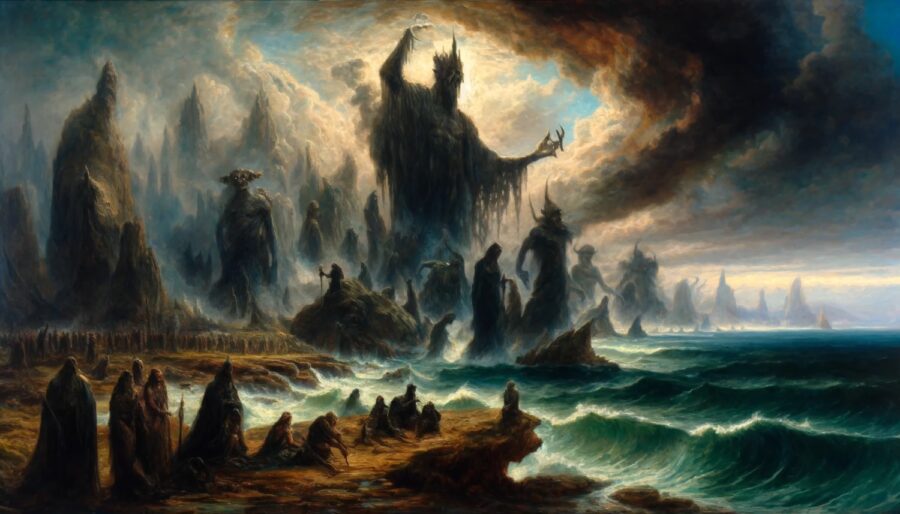


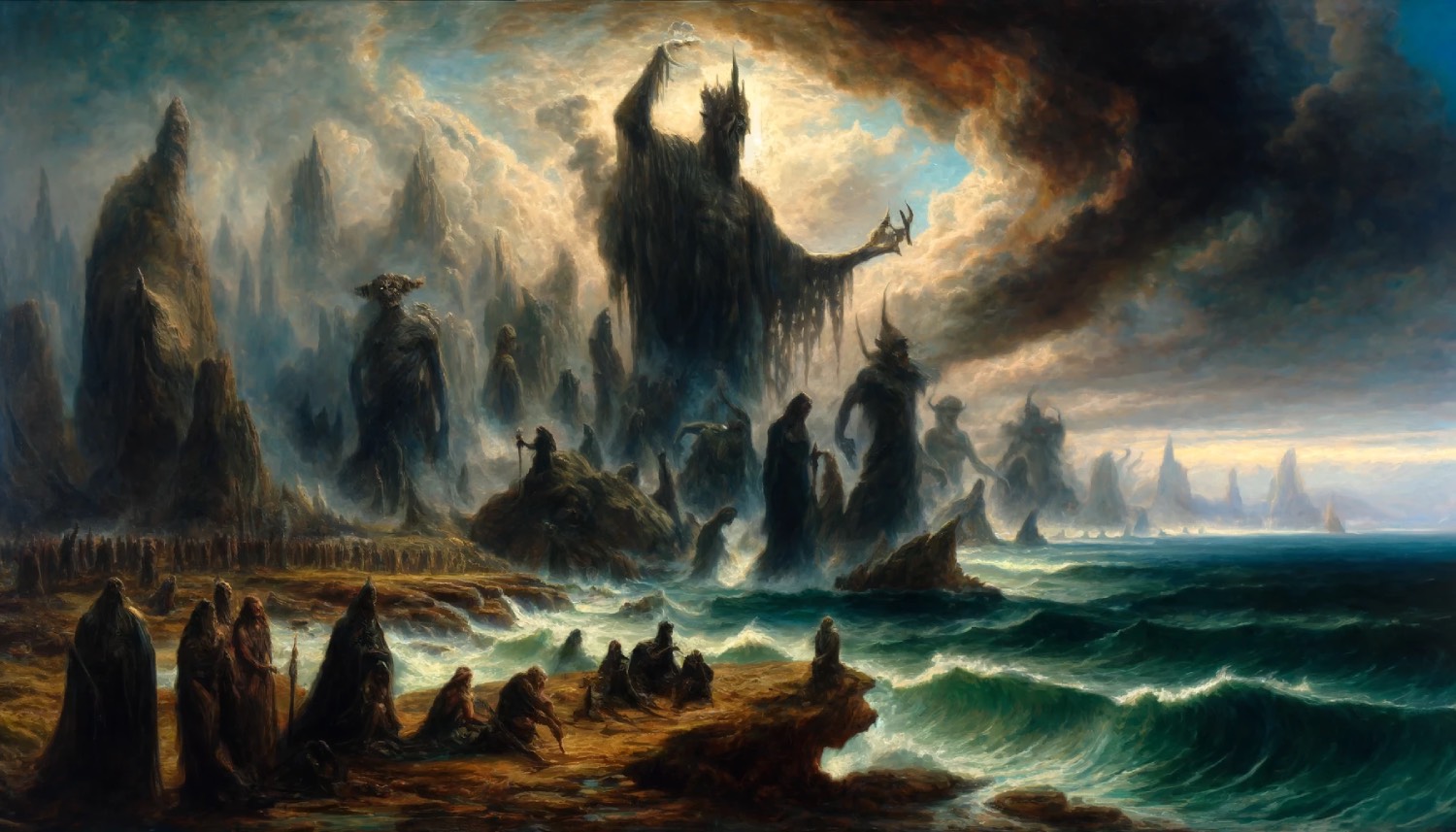
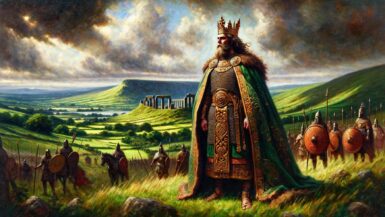
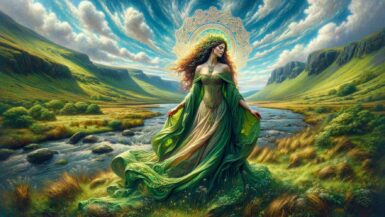
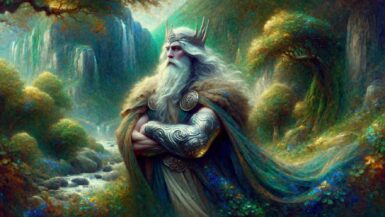
Leave a reply